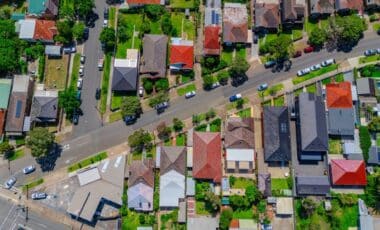Despite government efforts, Australia’s housing affordability crisis continues to worsen. Home prices remain stubbornly high, with supply targets falling short and investment incentives fuelling further demand. Policymakers have pledged solutions, but the structural issues in the market remain unchanged.
With housing increasingly treated as a financial asset rather than a basic necessity, affordability has deteriorated over decades. While government schemes have set ambitious construction targets, approvals remain well below required levels. As property investment remains lucrative, ownership is slipping further out of reach for many Australians.
A Market That Resists Downturns
Australia’s housing market has long been known for its resilience. Even in times of economic hardship, property values have rarely experienced substantial declines. According to ABC News, the average housing downturn since 1980 has resulted in only a 6.7% drop in prices. The largest recorded decline—10.2%—occurred in 2017 following regulatory measures targeting investor lending.
Despite a severe decline in household disposable income, the current correction in property prices remains minor. Since peaking in November, median home values across capital cities have fallen by less than 1%.
With anticipated interest rate cuts on the horizon, real estate analysts predict prices will soon rise again, further eroding affordability. According to property data firm CoreLogic, two-thirds of real estate agents expect house prices to increase in 2025, with most forecasting gains of more than 5%.
The enduring strength of Australia’s property market has made housing a preferred investment vehicle, further sidelining aspiring homeowners. While affordability measures have been introduced, they have done little to counteract the structural forces that keep prices high.
Government Housing Targets Falling Behind
In an effort to address the crisis, Australian governments at both state and federal levels launched the National Housing Accord in 2022, aiming to deliver 1.2 million new homes over five years. However, according to ABC News, recent data indicates that this target is far from being met.
To stay on track, Australia would need to approve 20,000 new dwellings each month from mid-2024. Yet, recent figures reveal that monthly approvals remain at around 15,000, creating a persistent shortfall.
Since the programme’s launch, overall approval rates have declined rather than increased. If current trends continue, meeting the target would require an unprecedented 42% rise in approvals—a highly improbable scenario given labour shortages, material costs, and planning constraints.
Adding to the challenge, policymakers are prioritising urban densification over new suburban developments. While this approach is intended to reduce infrastructure costs, it has been met with resistance from local communities. As a result, progress remains slow, and the goal of significantly increasing housing supply remains elusive.
Housing as an Investment, Not a Right
Australia’s housing market has shifted from being a basic necessity to a financial asset. This transformation was cemented in 1999 when the Howard government halved capital gains tax, making property investment more attractive. According to ABC News, this policy, combined with negative gearing and a series of interest rate cuts, helped fuel long-term price growth.
Unlike other investments, property values in Australia rarely experience significant crashes. While stock markets undergo regular downturns, the housing sector has proven remarkably stable. Government interventions—such as first-home buyer grants—have done little to improve affordability, often stimulating demand rather than addressing underlying issues.









